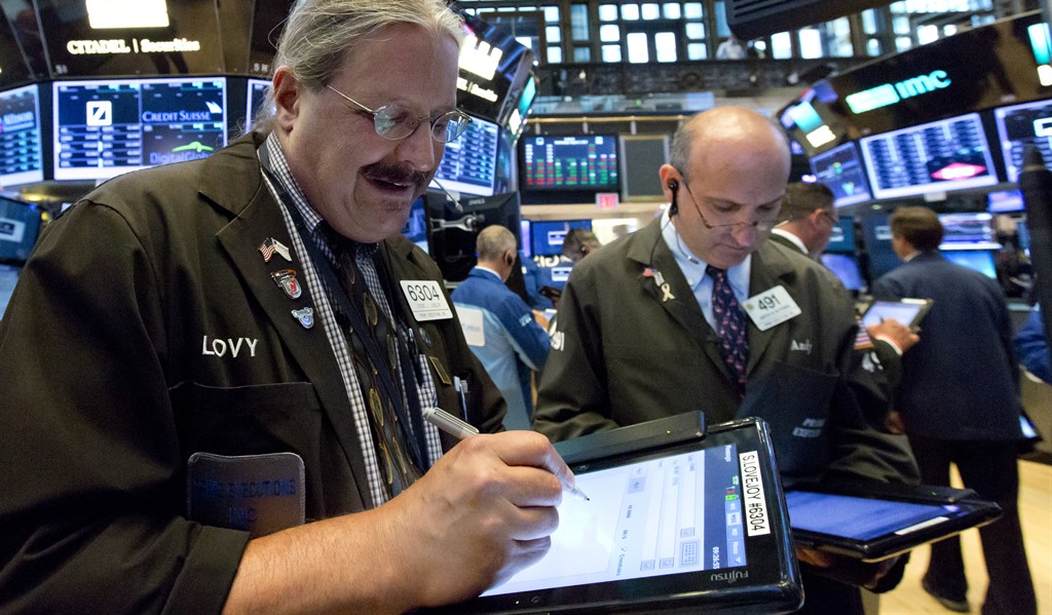This week, the financial news centers around a record high for the Dow Jones Industrial Average above 23,000. We can never know the time or date of the next crash until after the fact, but this market has been on a steady rise for over eight years, reaching one high after another, just like in 1987.
On October 19, 1987, 30 years ago this week, the Dow Jones Industrial Average fell 22.6% in one day – almost twice the decline of the previous worst day on Wall Street, back in 1929. Experts still debate the cause of the 1987 crash, but the best lesson to take away from that traumatic event is the value of diversification. Those with 100% of their money in stocks lost 22.6% in one day and about 35% in two months. Bonds were also falling in 1987. Gold and rare coins were almost alone in the plus column in late 1987.
Even though gold peaked at $504 per ounce in early December, 1987 – about six weeks after the stock market crash – rare coins continued to rise through the late 1980s. The late 1980s delivered one of the greatest bull markets for rare coins. According to the rare coin PCGS3000® Index, rare coins rose 665% from 1982 to 1989 with the steepest rise coming after the 1987 stock market crash. We can’t promise these kinds of gains after the next stock market crash, but it always pays to diversify.
Silver May “Catch Up to Gold” By Year’s End
Last year, silver rose about 16%, almost doubling gold’s rise of 9%. This year, the situation is reverse, with gold up 13% and silver up about 7%. However, the October 16th Barron’s offered a feature in their Commodities Corner (“Silver May Grab the Gold in 2017”), which makes the case for $19 to $20 silver by year’s end vs. only $1,300 for gold. If so, that would amount to a 17% to 23% annual gain for silver.
Recommended
The basic case for silver is that it is primarily an industrial metal and industrial metals are rising with the global increase on manufacturing production. Last week, the International Monetary Fund (IMF) raised its forecasts for global GDP growth to 3.6% this year and 3.7% in 2018. China, Japan, Europe, Canada and the U.S. have all made upward GDP revisions, which tends to raise the price of industrial metals. In brief, gold rises mostly on investment demand and seasonal jewelry demand, while silver tends to follow gold’s rise or fall, with an extra premium for rising industrial demand when the global economy expands.
Part of the reason for gold’s surge is a decline in the dollar. The Dollar Index fell from 101 in April to 91 in early September but then rose back to 94 in early October, sending gold down in dollar terms. However, the dollar resumed its long-term down-channel earlier this month, falling back to 92.5, lifting gold up.
Steve Forbes (and Nathan Lewis) Champion the Gold Standard
Forbes Magazine just celebrated its 100th anniversary with a special issue. In addition, Editor-in-Chief Steve Forbes has long been a champion of the gold standard. In his “Fact & Comment” editorial in the October 24 issue, entitled “the Key to Prosperity…Ignored,” Forbes reviewed a new book on gold, “Gold: The Final Standard” by Nathan Lewis, who also wrote two previous books on gold: “Gold: The Once and Future Money” and “Gold: The Monetary Polaris.” Forbes wrote his own book favoring the gold standard in 2014: “Money: How the Destruction of the Dollar Threatens the Global Economy.”
Among Forbes’ observations on gold this month:
“Unstable currencies are like viruses in your computer – they corrupt those ‘bits’ of information. Destructive bubbles result, such as the housing frenzy preceding the 2008-2009 crisis…. Most people took to heart the message that rising prices seemed to convey: All these things were becoming dearer. The misinformation conveyed by prices resulted in hundreds of billions of dollars being misinvested.”
“Everyone understands the basic need for fixed weights and measures in daily life: The amount of liquid in a gallon, the number of ounces in a pound, the number of minutes in an hour… Just as we use a scale to measure something’s weight, we use money to measure the value of products and services. If the measuring rod itself becomes unstable, the smooth functioning of an economy is disrupted, just as our lives would be if the number of minutes in an hour constantly fluctuated…. The fluctuating price of gold today doesn’t reflect the real value of the yellow metal but, rather, the fluctuating value of currencies.”
“The belief that a currency should have a fixed gold value (the pound/gold ratio remained 3.89 pound sterling per ounce for more than two centuries) became widely accepted thanks to the roaring economic success of Britain, starting in the 1700s, and then of the U.S. after Alexander Hamilton’s sound money reforms under George Washington. By the time of the First World War, just about every self-respecting country was on the gold standard – or knew it should be. Thanks largely to money being a stable and thereby non-disruptive tool, the world economy expanded on a scale that had never before happened.”
























Join the conversation as a VIP Member